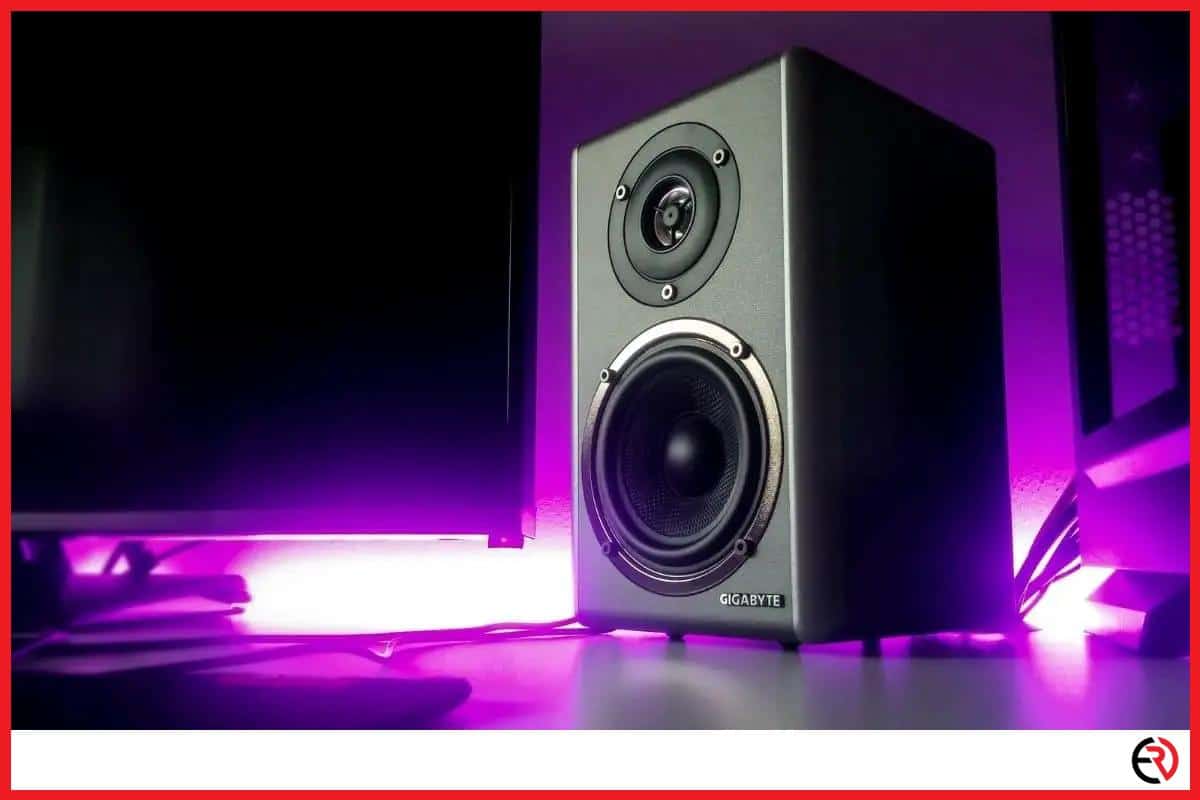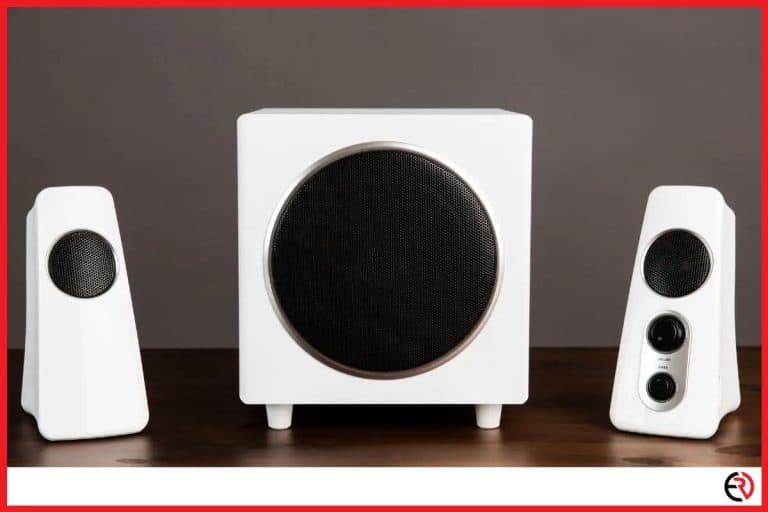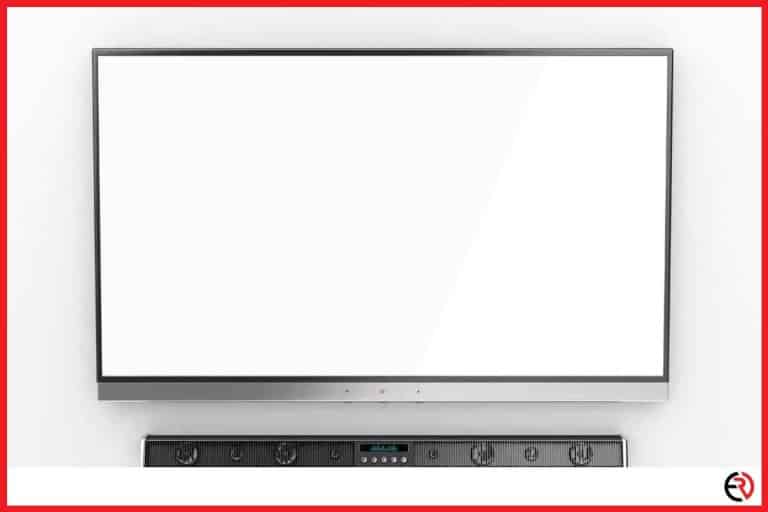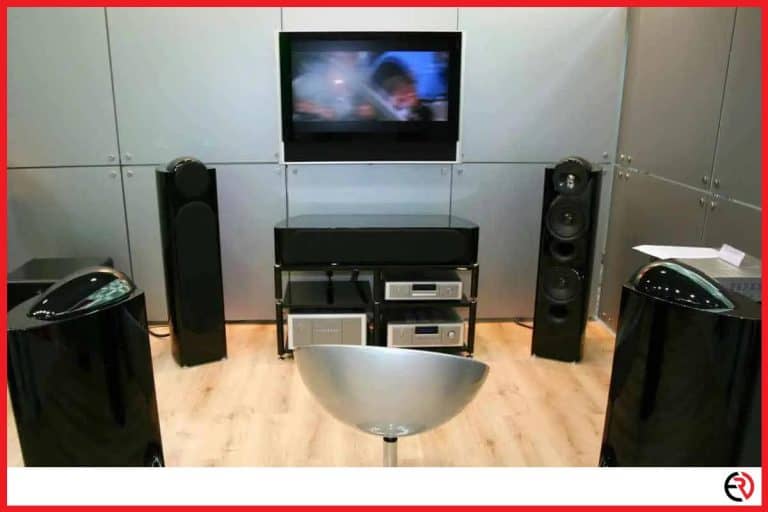Can You Use Any Speakers for Surround Sound?
This post may contain affiliate links which means that, if you choose to make a purchase, I may earn a small commission at no extra cost to you.
Building a viable home theater is challenging. There are many options to choose from, such as tower, bookshelf, ceiling, center, and subwoofers. Aligning a random set of speakers will not work since you must factor in impedance, proper placements, and angles. It’s a difficult chore, one that experts best do. But you can DIY the setup once you know a few tricks.
Yes, you can use any speakers for surround sound. However, you have to connect them to a matching receiver with a similar impedance rating and place them appropriately throughout the room.
You should take your time researching speaker features before investing in them. So let’s see how you should go about the task.
What speakers do you need for surround sound?
Speaker selection is based on position, and you will need at least two front speakers, two rear speakers, one subwoofer, and two ceiling speakers (if you are interested in Dolby Atmos). You can have two more speakers at the sides, and it’s based on personal preference.
Constructing a surround sound system takes time and patience. You have to ensure all the speakers are in sync with each other. Rushing together a setup not only creates lousy sound but can also damage the speakers.
What speakers should you prioritize in a surround sound system?
Begin with the center speaker since it deciphers most audio effects, including sound effects and dialogues. The critical component is the subwoofer since it is responsible for the overall bass. The front and rear speakers take the least priority.
Some homeowners do not use any subwoofer, which is acceptable. However, a speaker system without a center speaker makes no sense. Almost any speaker collection will have a central speaker followed by the rest.
There are two ways to set up a music system. You can buy a set of speakers or purchase individual components and arrange them one by one. The latter requires a bit of experience, so ask an expert for advice if you want a custom rig.
Always start with the front speakers set (right, left, and center speakers) and move towards the back. Once the front is complete, add two rear speakers, and you are all done. If you want Atmos, you will have to invest in two mounted or ceiling speakers for the full 3D effect.
For instance, you can use the Klipsch Synergy Black Label B-200 as the rear speakers. They offer great dynamic coverage for low, mid, and high tones, making them one of the best choices at this budget.

Unfortunately, central speakers sold separately are usually not that good. You are better off buying a set of front speakers and then buying complementary rear speakers to support it. But buying good speakers is not enough, as you have to place them appropriately throughout the room for the best possible results.
How to pick the best speakers for surround sound?
Natural acoustics, room specifications, media streaming device, receiver specification, and finally, the budget determines the surround speakers you should get for your room. The bare minimum is 5.1 (or 5.1.2 if you want Atmos), and you can work up from there depending on your budget.
There is no perfect formula to pick a surround sound system, and it all comes down to personal preference. You might prefer the same color as your room, more bass, better clarity, or 3D surround sound. The best way is to note all your needs and then pick one that meets them all.
Here is a brief explanation of all the ‘usual’ factors that determine how you should pick your speakers:
1. Natural acoustics – Natural acoustics determine how sound waves bounce off the surface of your inner walls. The best way to do so is to remove obstacles that risk distorting your audio stream. Curtains, rugs, carpets, even some furniture have a muffling effect on the overall audio inside of your room. If you are unsatisfied with the audio quality, move around these objects to adjust the overall audio effects.
2. Room dimensions – Since we are on the subject, let’s discuss room shapes. Surround speaker placements vary significantly on the room shape and size. For instance, the speaker setup in a wide room is not the same as in a longer room. Odd angles caused by furniture or walls also affect which speakers you choose because not all of them can perform consistently in an unconventionally shaped environment.
3. Receiver – Keep note of the impedance rating across all your speakers. If the receiver has an impedance rating of 8 Ohms, then you will also need speakers of similar impedance. You can buy a whole speaker system such as the Klipsch Reference Cinema Atmos 5.1.1 System and need not bother about impedance ratings whatsoever. But in the case of a custom setup, you will need to do some homework.
4. Budget – Budget is your final priority and the most important. If you have a low budget, I would advise buying a set of speakers instead of individual ones because that’s more cost-effective; however, if you have a bigger budget, it’s more cost-efficient to get individual speakers for the best musical experience possible.
FAQ
What are the different types of surround sound speakers?
There are three types of surround sound speakers, monopole speakers, bipole speakers, and dipole speakers.
1. Monopole speakers are direct blasting speakers that usually fire sound forward. Bipole or bi-directional speakers consist of two speaker drivers inside the soundbox that simultaneously fire in the opposite direction.
2. Bipole speakers are usually designed to direct sound in a general direction (seating area) instead of directly at individuals. They are better suited for a surround sound system since the audio spread is better than monopole variants. Bi-directional speakers are better at spreading the sound in a 5.1 or 7.1 setup, creating a more ‘complete’ experience. They consist of a small satellite design, like a compact bookshelf speaker.
3. Dipole speakers also have a pair of speaker drivers firing in the same cabinet, similar to the Bipole one, but there is one significant difference. While Bipoles are in-phase, Dipoles are out of phase. Simply put, Bipole speakers push audio out at the same time, while in Dipole, one speaker pushes while the other one pulls. This creates a diffused sound effect that covers a more dynamic sound spectrum.
No matter what types of speakers you use, it’s essential that you get the position correct for the right effect. Bipole speakers are usually more flexible compared to Dipoles, but you will have to test them yourself before picking one for your home.
What are the recommended brands in a home theater setup?
Usually, a whole set of all-in-one speaker systems are recommended. The top contenders include Sonos, Klipsch, Bose, JBL and Onkyo. Each brand fulfills a different purpose, so it’s better to check them all out before making a final decision.
Custom vs. Speakers sets – Which one is right for you?
Go the custom route if you have a high budget and if you know how to mix and match separate brands based on their impedance rating, or have someone to help you. Otherwise, it’s better to stick to speaker sets because they come pre-assembled and are proven to work perfectly.
Conclusion
In theory, you can use any speaker in a surround sound system. However, putting them together and testing what works takes a lot of time, patience, and practice. This article contains the necessary info to help you get started on your journey, and the rest you have to figure out for yourselves. Good luck!









